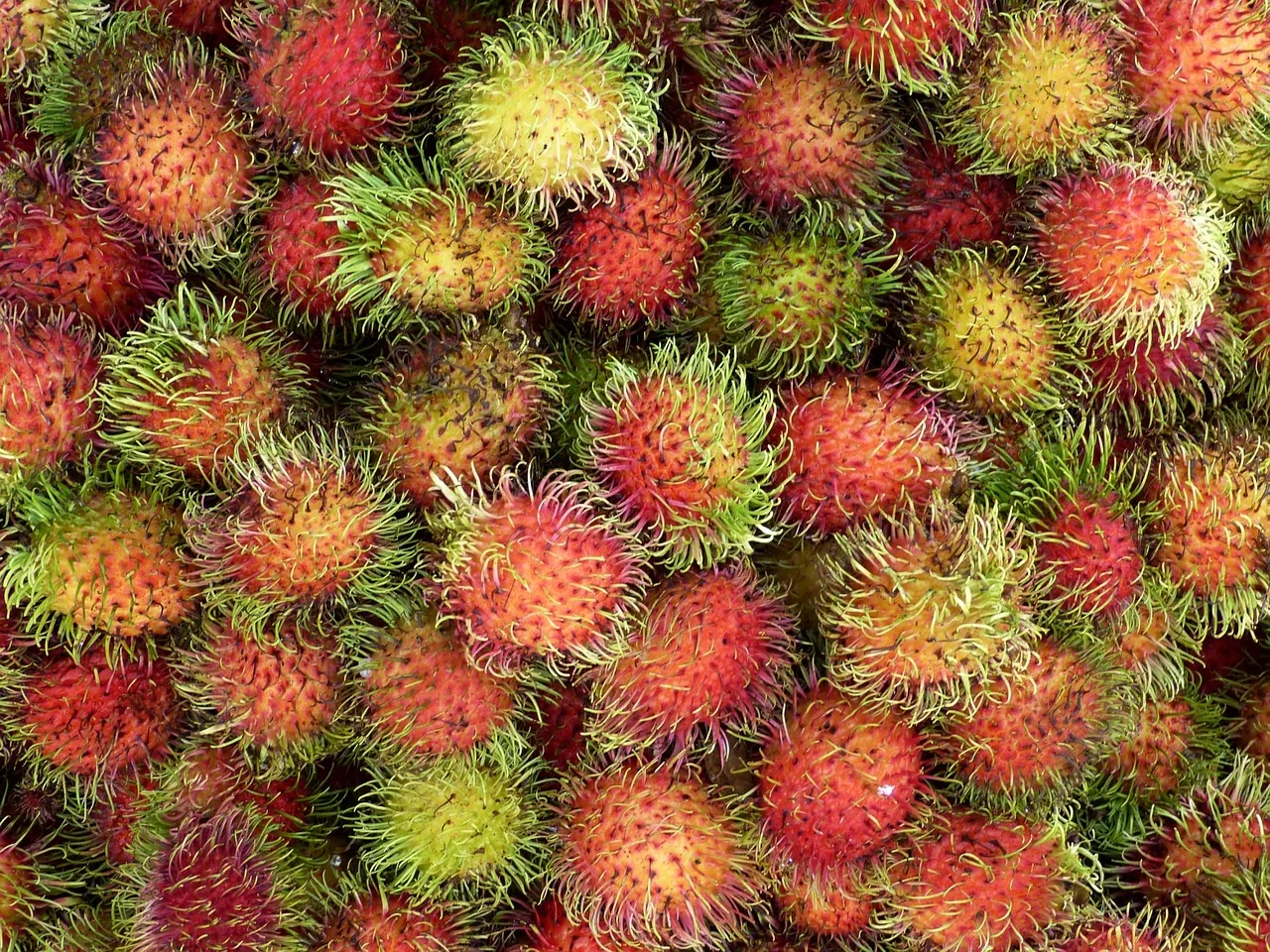
Rambutan, with its vibrant red skin and soft, fleshy interior, is a tropical fruit that has gained popularity worldwide. Indonesia, with its favorable climate and fertile soil, is known for its diverse range of rambutan varieties. These varieties differ in terms of appearance, flavor, and texture, making each one a unique experience for fruit enthusiasts. In this article, we will delve into the fascinating world of rambutan varieties found in Indonesia, exploring their history, characteristics, and nutritional benefits.
The History and Origin of Rambutan
The rambutan fruit has a rich history that dates back centuries. It is believed to have originated in Southeast Asia, with its roots tracing back to the Malay Archipelago. The name “rambutan” is derived from the Malay word for “hair” due to the fruit’s hairy exterior. It was first mentioned in ancient Indonesian texts and has since become a beloved fruit in the region.
Different Types of Rambutan Varieties in Indonesia
Indonesia is home to various rambutan varieties, each with its own unique set of characteristics. The most common varieties include Rongrien, Binjai, Lebak Bulus, and Raja Bulu. Rongrien is known for its large size and juicy flesh, while Binjai is prized for its sweet and aromatic flavor. Lebak Bulus is a smaller variety with a balance of sweetness and acidity, and Raja Bulu is celebrated for its exceptionally sweet taste.
Characteristics and Flavor Profiles of Popular Rambutan Varieties
Rongrien, the largest rambutan variety in Indonesia, is characterized by its bright red skin and long, spiky hairs. Its flesh is exceptionally juicy and sweet, with a hint of acidity that adds a refreshing twist to its flavor. Binjai, on the other hand, has a slightly smaller size and a reddish-yellow skin. Its flesh is incredibly sweet and possesses a distinct floral aroma, making it a favorite among fruit enthusiasts.
Lebak Bulus, a smaller rambutan variety, features a vibrant red skin and short, soft hairs. Its flesh is juicy and has a balanced combination of sweetness and acidity. Lastly, Raja Bulu, also known as the “King of Rambutan,” boasts a bright red skin and long, soft hairs. Its flesh is incredibly sweet, with a rich flavor that lingers on the palate.
How to Identify and Choose the Best Rambutan
When selecting rambutan, there are a few key factors to consider to ensure you choose the best fruit. First, examine the skin of the rambutan. It should be vibrant in color and free from blemishes or bruises. The hairs on the skin should be intact and not easily detached. Next, gently squeeze the fruit to assess its firmness. It should have a slight give without being too soft or too hard. Finally, smell the rambutan. A ripe rambutan will have a sweet and fragrant aroma.
Nutritional Benefits of Rambutan
Rambutan is not only a delicious fruit but also packed with numerous health benefits. It is a rich source of vitamins and minerals, including vitamin C, iron, and calcium. Vitamin C is essential for boosting the immune system and promoting healthy skin, while iron and calcium contribute to overall bone health. Rambutan also contains antioxidants that help fight against free radicals and reduce the risk of chronic diseases.
Traditional and Modern Uses of Rambutan Varieties in Indonesian Cuisine
In Indonesian cuisine, rambutan is enjoyed in various traditional and modern ways. It is often eaten fresh as a snack or used in fruit salads and desserts. The sweet and juicy flesh of rambutan pairs well with other tropical fruits, creating a delightful medley of flavors. Additionally, rambutan is also used in jams, jellies, and syrups, adding a burst of sweetness to these culinary creations.
Cultivation and Farming Practices for Rambutan Varieties
Rambutan cultivation in Indonesia involves specific farming practices to ensure optimal growth and fruit production. The trees thrive in tropical climates with well-draining soil and require regular watering and ample sunlight. Pruning is essential to maintain tree health and promote fruit-bearing. Farmers also need to protect the trees from pests and diseases through proper pest management techniques.
Challenges and Future Prospects for Rambutan Varieties in Indonesia
While rambutan cultivation in Indonesia has flourished, there are challenges that need to be addressed to ensure the future prosperity of the industry. Climate change poses a threat to fruit production, as extreme weather conditions can affect tree health and yield. Additionally, market demand and competition from other fruit varieties require continuous innovation and marketing strategies to promote rambutan both domestically and internationally.
Conclusion: Celebrating the Diversity of Rambutan Varieties in Indonesia
Indonesia’s diverse rambutan varieties offer a feast for the senses, with their unique characteristics and flavors. From the large and juicy Rongrien to the sweet and aromatic Binjai, each variety has its own distinct appeal. Whether enjoyed fresh, in desserts, or in other culinary creations, rambutan continues to captivate fruit enthusiasts around the world. As we celebrate the abundance and diversity of rambutan varieties, let us also recognize the efforts of farmers and researchers in preserving and promoting this beloved fruit.
If you’re eager to explore the flavors of rambutan yourself, head to your nearest tropical fruit market and select a ripe and vibrant rambutan. Experience the sweet and juicy flesh that Indonesia has to offer!






